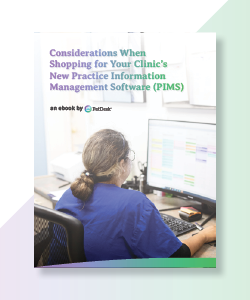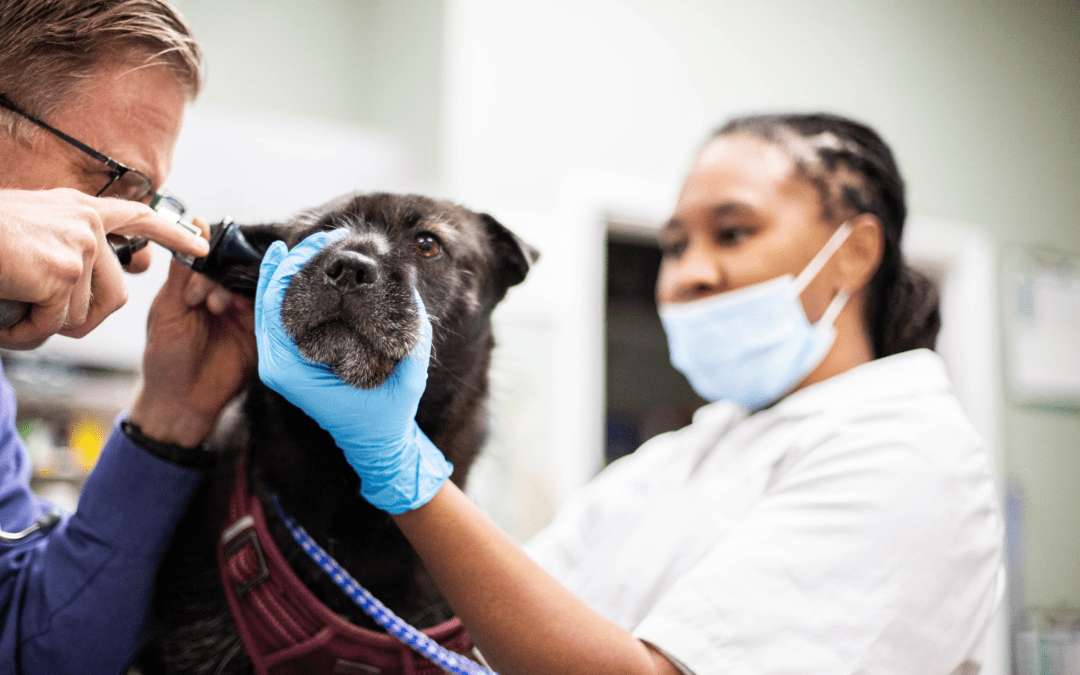Once you decide to transition to a new practice management system (PIMS), you and your team embark on a series of debates. Where do you want to store the data? Which software programs will integrate with the new system (and which may not)? And how will you handle training your team members on the new veterinary software?
Part of that question depends on how long the transition will take. And what the company’s training sessions look like—essential details to know when you start shopping for your PIMS.
You’d like the new system to work as efficiently as possible (for everyone). That means discussing the training procedure to ensure it will benefit the entire team. Miscommunication or a lack of communication could lead to problems—not something you want to deal with when you’re in the middle of a launch!
Training on your PIMS before the transition
You want the transition to any veterinary software to go smoothly. And that means training the team as early as possible.
Most companies have online modules that allow your staff to start learning the system as soon as you authorize the purchase. They can walk through every aspect of the veterinary software, from the dashboard to creating a treatment plan or invoice. Plus, you often have the option of built-in quizzes or check-off sheets to ensure that team members complete the modules associated with their tasks by a specified deadline.
Online tutorials give staff members the ability to learn at their own pace. They can also pause or replay a lesson if needed. Not to mention writing out lists of questions or problems they encounter—BEFORE they’re juggling active clients.
Ideally, you want to have your team begin training on the PIMS at least ONE MONTH before launching new software.
The advantage of live training sessions
What’s the downside of online training modules? Everything WORKS. Since the lessons and tutorials are designed to teach a veterinary team how to use the product, everything flows smoothly.
Not precisely “true to life.”
To help with the scenarios an ideal world DOESN’T account for, many PIMS companies also offer the services of a trainer. This individual is available onsite to provide live training for your team. As the representative knows the software forward and backward, they’re uniquely positioned to answer questions and troubleshoot problems people noted during the online tutorials.
Modules are fantastic, but the ability to ask questions and dialogue with an instructor is invaluable. The trainer can confirm (or deny) the training offered by those first lessons. And they can provide additional time and attention if it’s needed.
The trainer will also set up a demo account for everyone to work with (ensuring your data stays safe from unintentional accidents). The hands-on training reinforces everything learned during the online modules while letting your team test drive the PIMS for themselves.
Arranging for this live training at least ONE WEEK before the launch helps ease those “new veterinary software” jitters.
Troubleshooting training issues during the PIMS launch
Wouldn’t it be wonderful if every veterinary software launch went off without a hiccup? Unfortunately, that isn’t realistic. There are bound to be a few problems that arise as you transition to your new PIMS. How you respond to those issues will set the tone among your team members.
It helps if you single out one or two individuals who understand the software best. They excelled at the online modules and stood out from the crowd during the live training. Maybe they spent extra time with the company rep, asking questions and learning the ins and outs of the PIMS. Or they may have used the software in a previous position. They’re your go-to troubleshooters when someone runs into a problem.
Set them up as the people team members can call when they get stuck. That will cut down on the number of calls to the software company. And it will streamline the process of questions for your staff.
Other helpful tips when looking to transition to new PIMS
Check-in with your team periodically to ensure they understand all of the functionality of the PIMS. While workflow can appear to be operating on the surface, there may be problems underneath. And most of the time, they stem back to improper training. It’s one of the most significant issues when transitioning to new veterinary software.
Of course, there are other crucial questions involved.
And we cover all of them in our new ebook: Considerations When Shopping for Your Clinic’s PIMS. We’ll walk you through all of the aspects of choosing a new PIMS, from that first training session to every subsequent upgrade.
Ready to book a demo?
Get a tailored recommendation and overview of PetDesk’s
veterinary client communication software.
Lighten your schedule
Schedules these days are full. And the thought of turning away even ONE client will likely receive some pushback from owners. But a lighter schedule as your team adjusts to the new workflow will make everyone happier.
Yes, you took the time for training. But timing is different in practice. And if there’s room during the day for check-in, lab requests, and check-out on the new PIMS, everyone will breathe more easily.
One or two days of a light schedule are usually enough to get the team comfortable with new veterinary software. And it results in a smoother transition.
Client communication
Naturally, you want to let your client base know about the upcoming changes—and not just because of those lightly scheduled days. If pet parents know about a change in veterinary software ahead of time, they’re more likely to remain patient about any potential delays.
Consider the following:
- An announcement in your clinic newsletter of the coming change
- A gently-worded message in your client-facing app
- Posted signage around the clinic
Ensure you include a celebration of the new features that benefit your clients in your messaging. This way, they’ll know what they’re getting as your staff navigates a new check-out procedure.
Further training opportunities for your PIMS
Once your team’s operating smoothly and you’ve fully transitioned to a new PIMS, don’t abandon your training thoughts.
You need to keep staff turnover in the back of your mind. Appointing a team trainer is the best course of action. Your trainer can help bring new staff up to speed as they come on board without a loss of productivity.
Also, look for veterinary software companies that offer continuing opportunities to learn and grow. As the PIMS gets upgraded, does the company offer new online classes and training options? Do they provide online or in-person webinars? Remember, continuing education is vital for the growth of your team. If a company has a library of related materials for your team, you don’t want to overlook that advantage.
Other helpful tips when looking to transition to new PIMS
Check-in with your team periodically to ensure they understand all of the functionality of the PIMS. While workflow can appear to be operating on the surface, there may be problems underneath. And most of the time, they stem back to improper training. It’s one of the most significant issues when transitioning to new veterinary software.
Of course, there are other crucial questions involved.
And we cover all of them in our new ebook: Considerations When Shopping for Your Clinic’s PIMS. We’ll walk you through all of the aspects of choosing a new PIMS, from that first training session to every subsequent upgrade.
Are You Ready To Say Goodbye to No-Shows and Lost Revenue with PetDesk?
Leverage automated reminders, appointment requests, two-way messaging, payments, and more through our mobile app to boost patient compliance and staff satisfaction.







